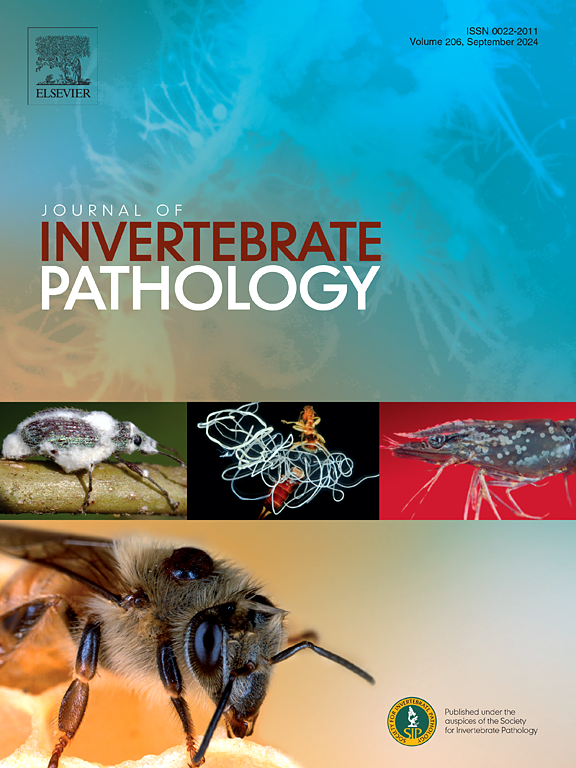昆虫对小孢子虫的免疫
IF 2.4
3区 生物学
Q1 ZOOLOGY
引用次数: 0
摘要
微孢子虫是一类与真菌相关的单细胞真核寄生虫,在其漫长的进化史中,从其他单细胞生物到哺乳动物,它们已经在广泛的宿主中定居。所描述的微孢子虫物种的很大一部分感染昆虫,包括经济上重要的昆虫,如蜜蜂和蚕。小孢子虫感染所有昆虫目的代表,它们的多样化往往与它们的宿主相似。它们在昆虫中的广泛分布表明它们有能力克服宿主的防御机制。本文综述了昆虫免疫系统如何响应微孢子虫感染以及这些寄生虫如何逃避关键免疫防御的最新发现。昆虫的防御机制——包括群栖昆虫的行为反应、肠道内的物理屏障和抗菌肽的产生——由于其生命周期和孢子结构的独特特征,似乎对小孢子虫的有效性有限。然而,关键的免疫反应,如感染细胞的凋亡、氧化应激和血细胞介导的反应,如黑色素化,在保护昆虫免受这些寄生虫的侵害中起着至关重要的作用。本文章由计算机程序翻译,如有差异,请以英文原文为准。

Insect immunity against microsporidia
Microsporidia are a group of fungi-related, unicellular eukaryotic parasites that, over the course of their long evolutionary history, have colonized a wide range of hosts from other unicellular organisms to mammals. A significant portion of the described microsporidian species infect insects, including economically important ones such as honeybees and silkworms. Microsporidia infect representatives of all insect orders, and their diversification often parallels that of their hosts. Their widespread distribution among insects suggests an ability to overcome host defense mechanisms. This review summarizes the latest findings on how the insect immune system responds to microsporidian infections and how these parasites evade key immune defenses. Insect defense mechanisms — including behavioral responses in social insects, physical barriers in the intestine, and the production of antimicrobial peptides — appear to be of limited effectiveness against microsporidia, due to the unique features of their life cycle and spore structure. However, key immune responses such as apoptosis of infected cells, oxidative stress, and hemocyte-mediated reactions like melanization play a crucial role in defending insects against these parasites.
求助全文
通过发布文献求助,成功后即可免费获取论文全文。
去求助
来源期刊
CiteScore
6.10
自引率
5.90%
发文量
94
审稿时长
1 months
期刊介绍:
The Journal of Invertebrate Pathology presents original research articles and notes on the induction and pathogenesis of diseases of invertebrates, including the suppression of diseases in beneficial species, and the use of diseases in controlling undesirable species. In addition, the journal publishes the results of physiological, morphological, genetic, immunological and ecological studies as related to the etiologic agents of diseases of invertebrates.
The Journal of Invertebrate Pathology is the adopted journal of the Society for Invertebrate Pathology, and is available to SIP members at a special reduced price.

 求助内容:
求助内容: 应助结果提醒方式:
应助结果提醒方式:


